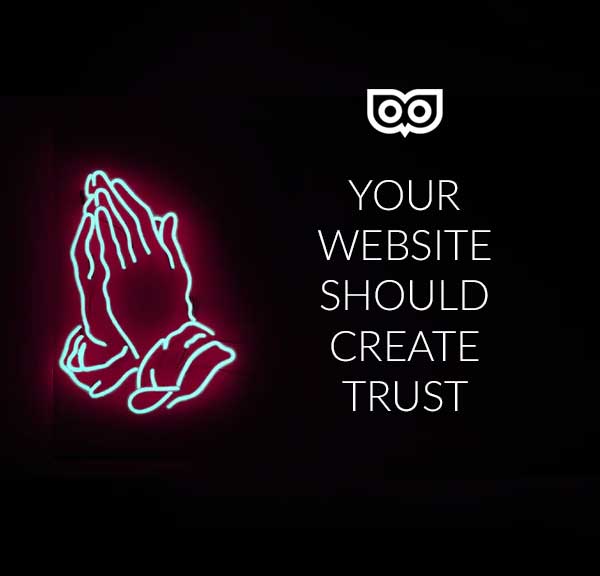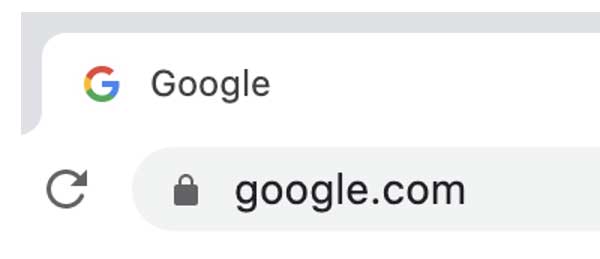
Your website security and usability checklist to building trust in your business
Although having a website is almost considered a requirement for today’s businesses, unless your website is high quality and trustworthy, it can actually do more harm than good for your business.
Despite the common phrase, “Never judge a book by its cover,” people continuously do; in this modern age, websites have been essentially the “cover” of your company and play a massive part in building a trustworthy reputation. Here are a few tips to make sure that you are putting your best foot forward online and help build a strong relationship right from the beginning.
Make sure you have an SSL certificate
Many people might ask, “What is an SSL certificate?”
SSL stands for “Secure Sockets Layer” and, essentially, the purpose of an SSL is to create a more secure connection to your website. It used to be most common for any website that hosted personal information, such as ecommerce sites, but now it’s good practice to have it on just about any website. It acts as an added layer of security and helps in establishing an encrypted link between a web server and a browser.

Why is it important to have an SSL certificate? As previously mentioned, it’s become standard practice to have SSL on your website, and without one, your website might be looked down upon for not being as secure or reliable, which isn’t a good look for any business. Many people who visit websites have started looking for the “lock” symbol in the corner of the URL to know that it’s trustworthy. Without this, your company might have a less dependable image than others, which could hurt your reputation.
Obtaining an SSL certificate is relatively simple, and there are a few ways to do so. Many website hosts have SSL certificates as a product offering or for free, and it may just need to be configured. If not, there are many websites that offer SSL certificates, a popular option being Let’s Encrypt, who offers many different types of free certificates in order to create a safer online community.
Protect your website with proper cybersecurity practices
Without proper cybersecurity options in place, your website could become vulnerable to a variety of cyberattacks, which can damage people’s trust and confidence in your business. This happens very often and to businesses of all sizes. This interactive graphic shows some of the largest data breaches throughout the years. In terms of how the fallout can affect your company, in 2013, Target lost data and information due to a cybersecurity breach, and their sales fell 46% compared to the same time the year prior.
How do you know your website might have been hacked? There are several different indicators that your website might have been breached by an external threat:
- Strange links to various products and scams start appearing in content that you wrote.
- You find increasing amounts of broken code, which means that someone could be tampering with your website.
- You get notified by a third party (Google, your web browser, or your website host).
These are just a few of the most common ways that you can identify if your website has been breached, but there are many other signs that are often more difficult to notice.
Take a proactive approach to secure your website before any cyberattacks come your way. Some easy ways to do this is making sure that you have strong and secure passwords for everything on the development side of your website, making it harder for someone to gain access. Regularly search for and install updates, as they often patch vulnerabilities that were recently detected. Try implementing a cybersecurity option for your business, common ones being antivirus software or next-generation firewalls. In addition, when choosing a web hoster, find one who is known and trusted for their level of security.
Regularly check for API errors
API, or Application Programming Interface, is a crucial part of your website, is it helps carry out user requests. If an API has a problem anywhere on your website, it can create a bad user experience, which could lead to the visitor becoming frustrated or simply leaving the site.
For example, if a visitor tries to access a page on your website, and receives the 404 error message, meaning the URL was incorrectly formed, they may become upset and leave your website. These simple errors can be embarrassing for a brand and could be harmful to your reputation.
There are a wide variety of API errors, and each kind is represented by a different starting number from 1-5, i.e. 1xx, 2xx,3xx and so on. Some can be as simple as not entering a link properly, while others can be a bit more complicated to diagnose.
These errors can happen for a vast number of reasons, but regularly checking your site to make sure everything is running smoothly can save your brand from the embarrassment of these errors. There are a few best practices to handling these API errors, and due to the number of updates and changes that happen frequently, something may have worked previously but doesn’t function anymore.
Make sure your website is user friendly
Having a user-friendly website is not only important for helping visitors get around quickly and efficiently, but it’s also a great way to build trust in anyone who visits your site. Making sure it’s easy to navigate around your site and find all the content you provide, any contact information, and any products you might offer can help build a trusting relationship.
If your website is particularly hard to navigate and find your way around, people may be more inclined to think it’s a scam. That’s why at TLD we’re so adamant about clarity of message and ease of navigation.
Many of the less trustworthy websites, which might try to steal information from its visitors, are made quickly without user experience in mind, which causes the impression that harder to navigate sites might be untrustworthy.
Visitors are more likely to trust your website if everything is easy to access and interact with. Have your contact information easily accessible and post engaging and non-stock (non-cheesy!) photos around the side to help encourage the impression that you are a trusted and unique site.
All of these and more!
Making sure that your website is trusted and valued by all who visit is extremely important for your brand’s reputation. Ensuring that you have your SSL certificate can help show that you value your visitors’ security, and are willing to take all measures you can. Protecting your website from cyberattacks can help prevent any negative brand exposure that could follow and helps keep your site safe from hackers. Regularly checking for API errors can guarantee that everything on your site is running smoothly, and helps prevent any users from having a bad experience, which might otherwise cause them to have a negative impression of your site. Having a website that is easy to understand and navigate can ensure that you aren’t considered untrustworthy and help your visits explore and investigate all areas of your unique business.


